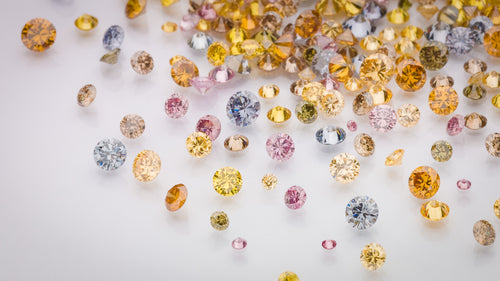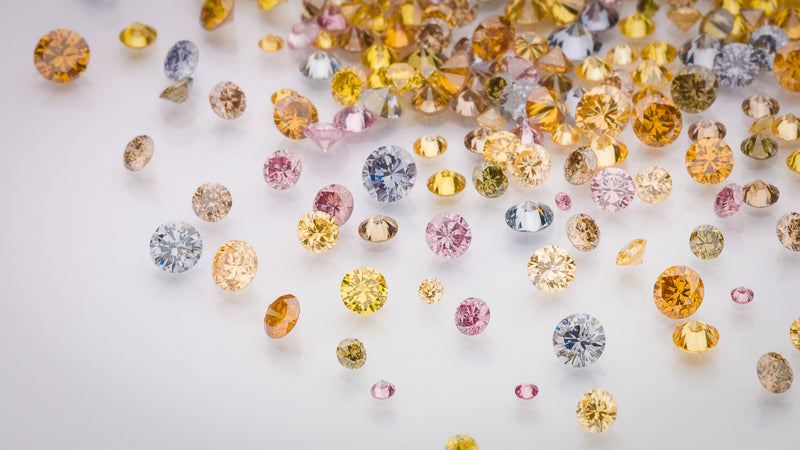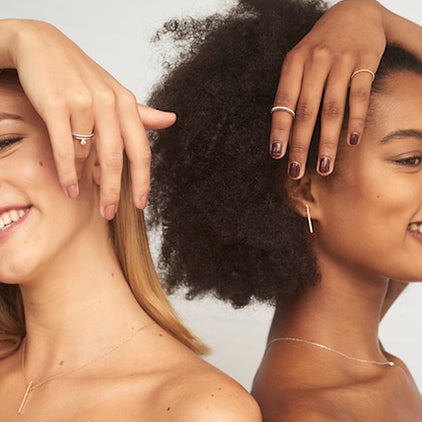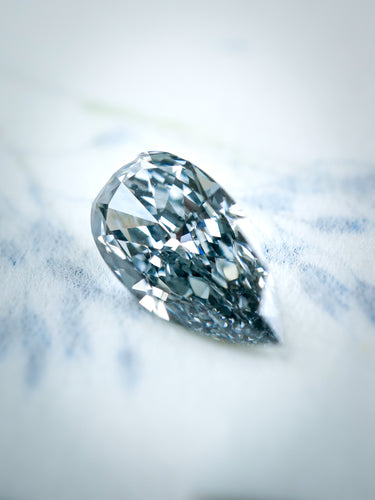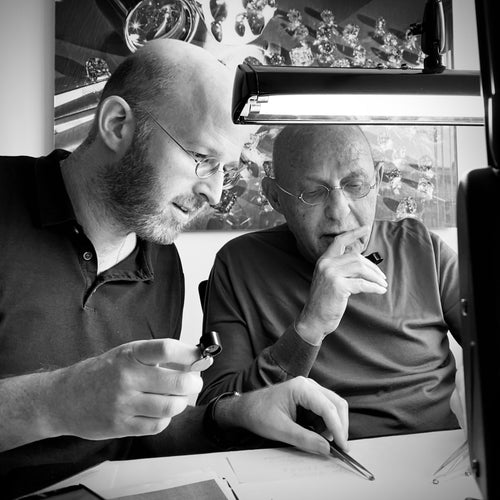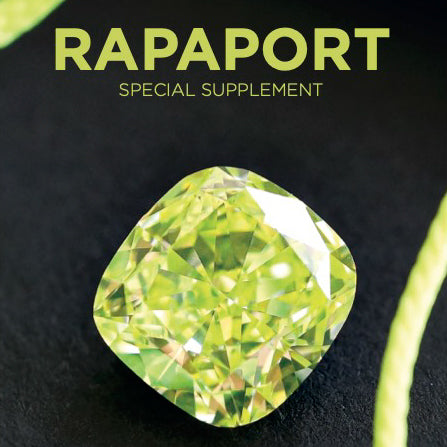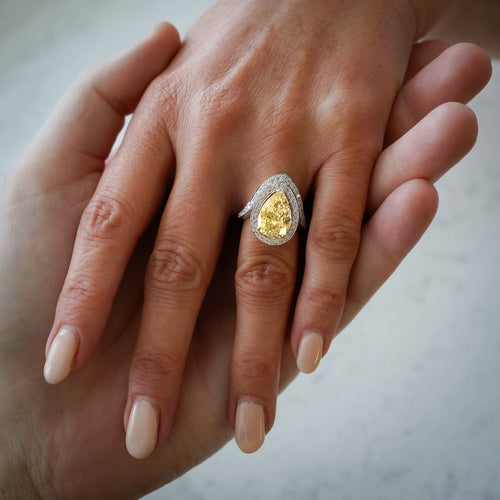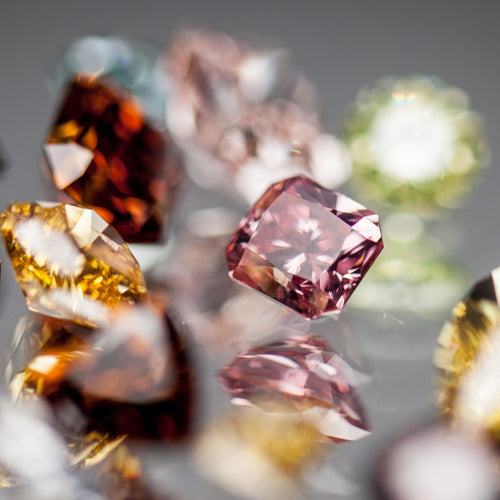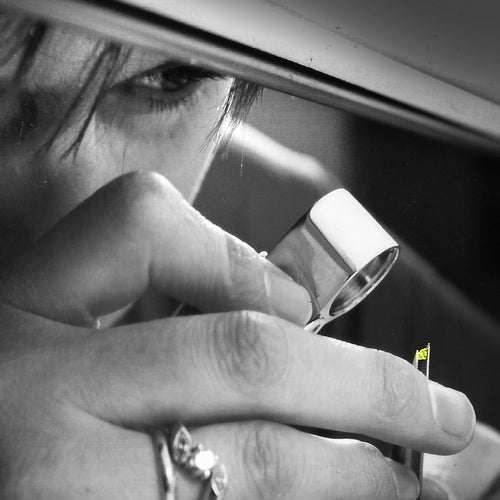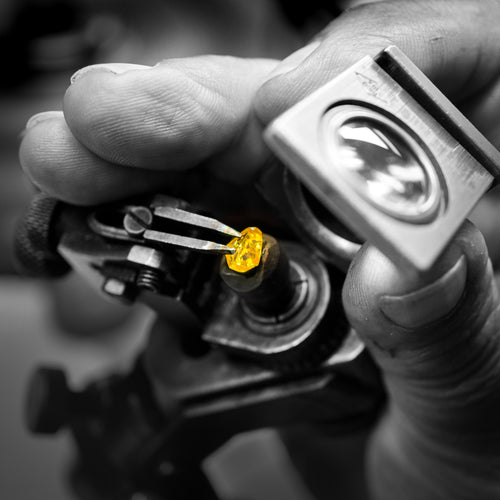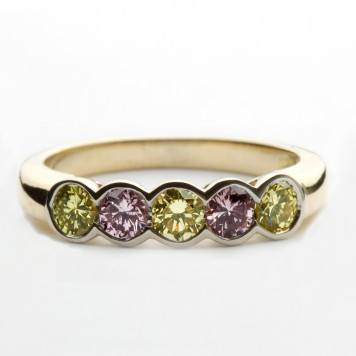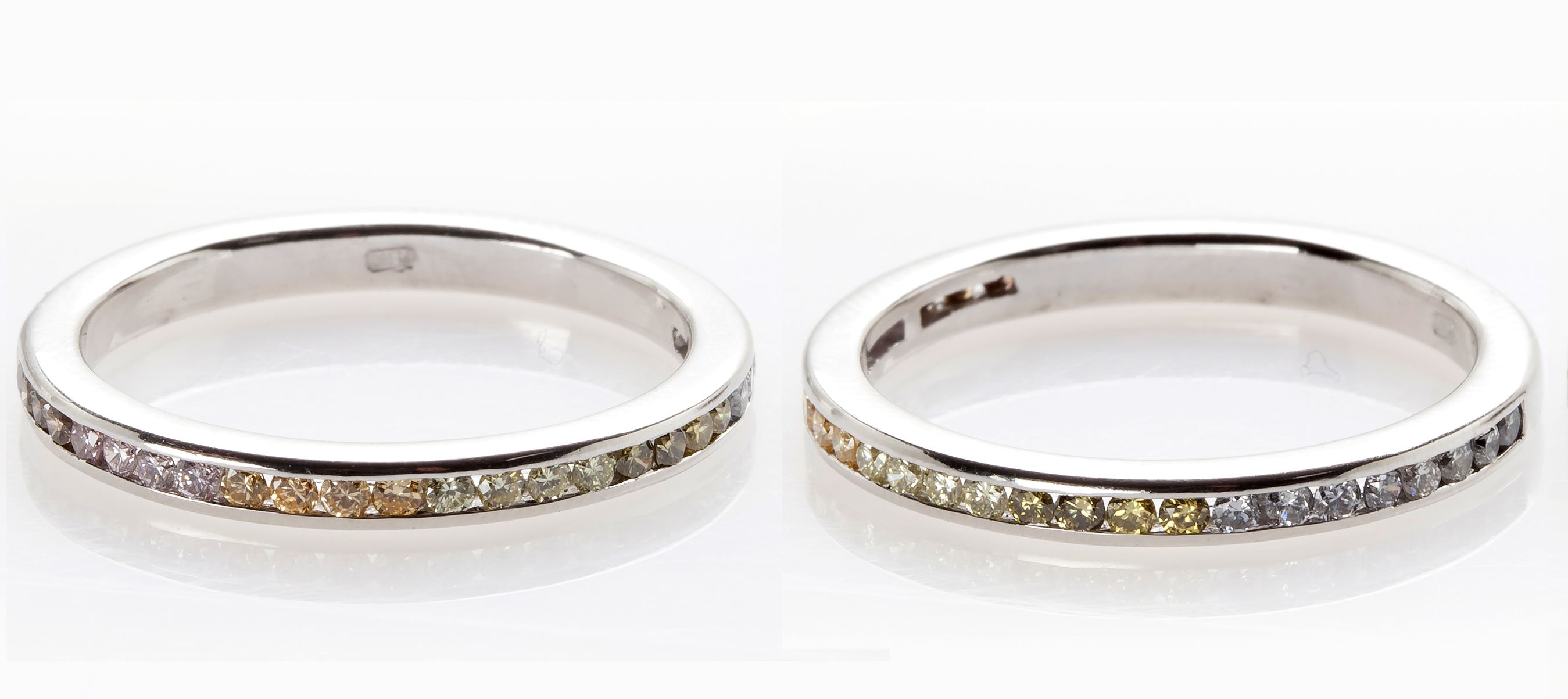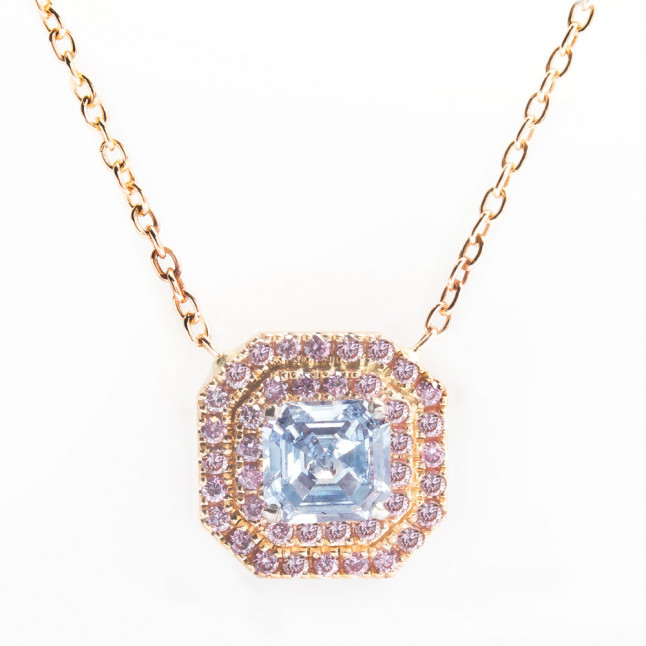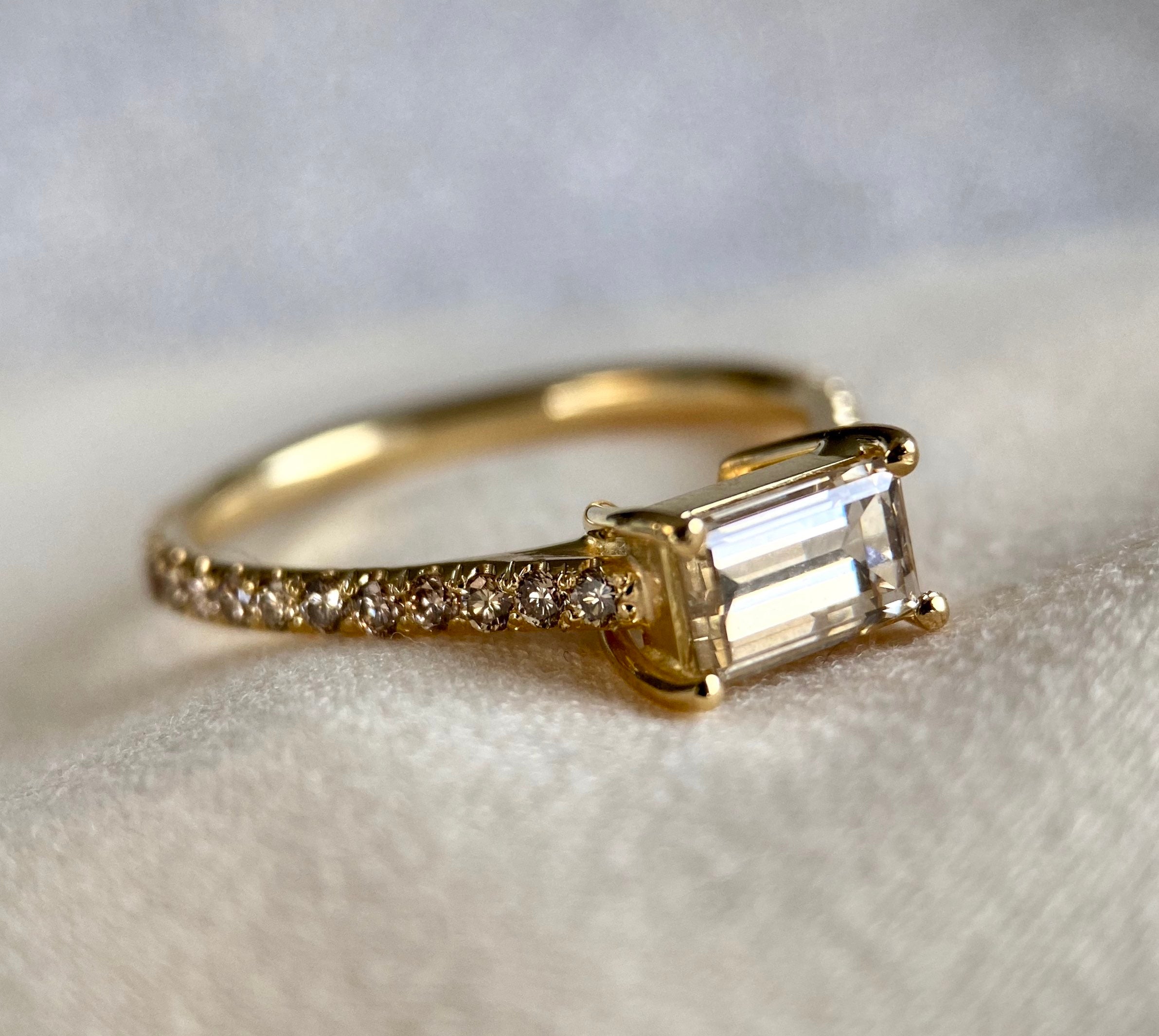



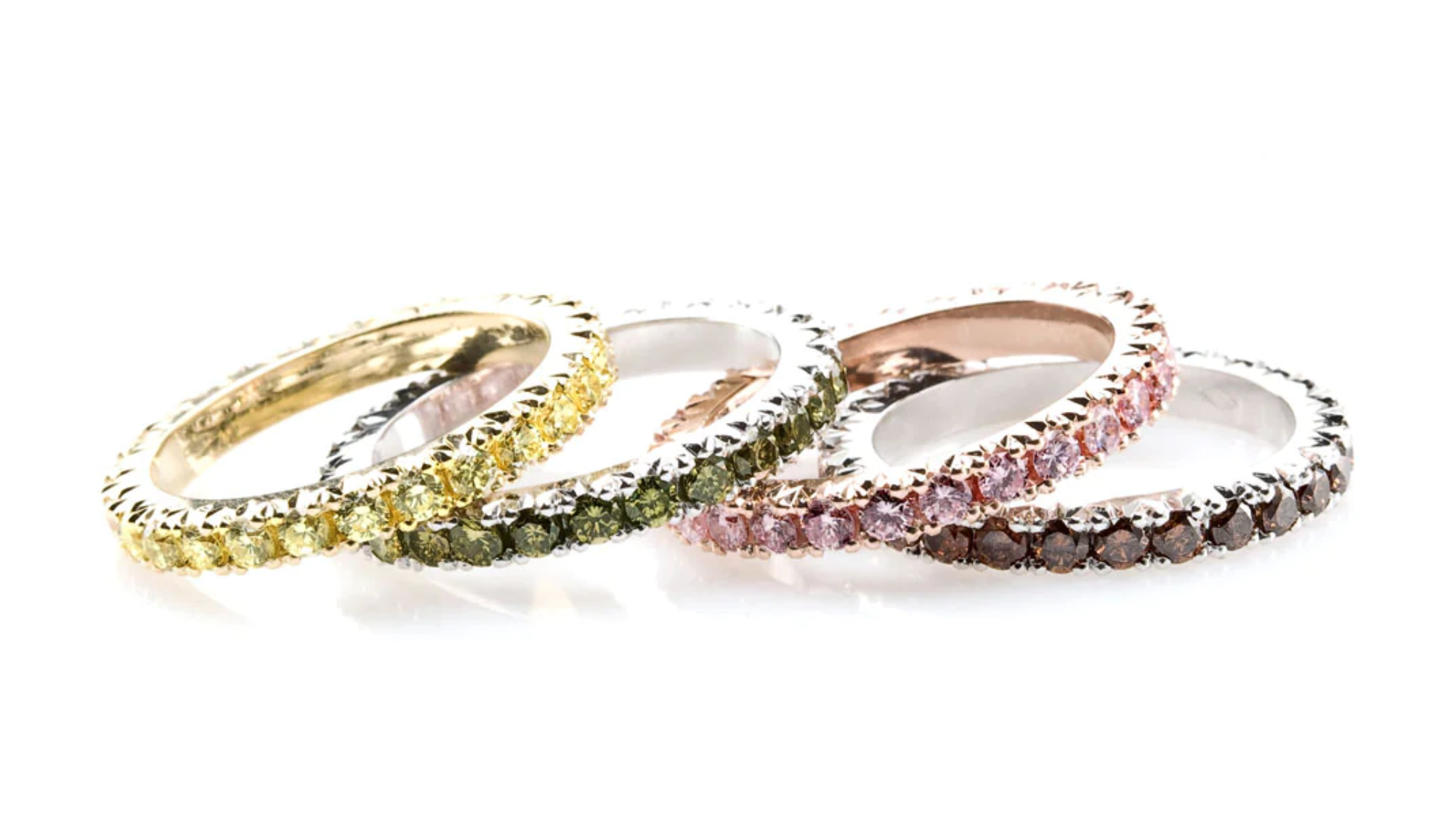

Play With a Full Spectrum of Colors - In Diamonds
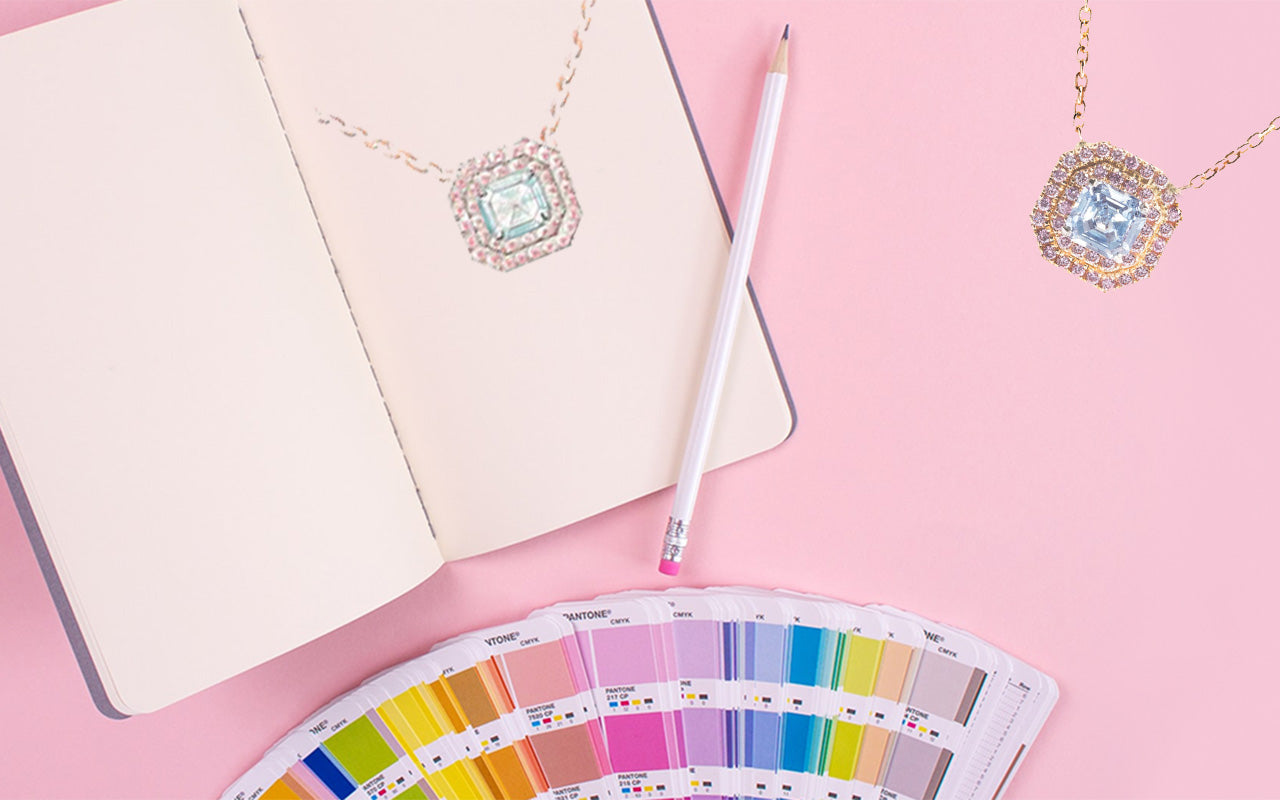
"Color is the place where our brain and the universe meet."Paul Klee
You don’t need to be a fine artist, gemologist, or fashion designer to love colors. But to truly appreciate the incredible spectrum of natural colored diamonds, it helps to have a basic understanding of color.
Color Systems
Invented in the 19th century, the traditional RGB model features the primary colors red, yellow, and blue, and complementary colors green, purple, and orange. The Munsell color system, an early 20th century scientific approach based on human’s response to color, was elected in 1995 as the basis to enhance GIA’s International Diamond Grading System™.
Playing with the Color Wheel
Looking at the color wheel will help you pair colors that play off each other. Saturation is the expression of the bandwidth of color, which results in varying intensities of the same color. Monochromatic color schemes play off variations in lightness and saturation of the same color to create elegant visual effects. A good example of this would be an eternity ring with different shades of yellow diamonds.
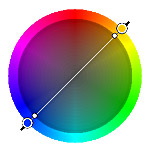
In the RGB model, complementary color pairs opposite each other on the color wheel are red–green, yellow–purple, and blue–orange. When you use these colors in the same piece, it can create quite a dramatic statement.
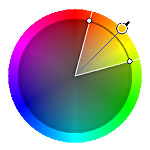 Using analogous colors next to one another on the color wheel is a great way to mix and match shades and tones in the same color scheme. This is similar to a monochromatic color scheme but results in a richer, nuanced look. One approach for playing with analogous colors is to set the same saturation of pink and blue diamonds or orange and yellow diamonds in one piece.
Using analogous colors next to one another on the color wheel is a great way to mix and match shades and tones in the same color scheme. This is similar to a monochromatic color scheme but results in a richer, nuanced look. One approach for playing with analogous colors is to set the same saturation of pink and blue diamonds or orange and yellow diamonds in one piece.
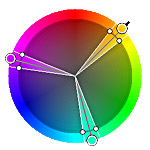 The triadic color scheme using three colors equally spaced around the color wheel results in a strong visual statement and rich color combinations. In jewelry, you can achieve a harmonious, more balanced look by positioning subtle hues of triadic colors next to each other, as in this purple and lime diamond ring in which the yellow gold setting is the third color.
The triadic color scheme using three colors equally spaced around the color wheel results in a strong visual statement and rich color combinations. In jewelry, you can achieve a harmonious, more balanced look by positioning subtle hues of triadic colors next to each other, as in this purple and lime diamond ring in which the yellow gold setting is the third color.
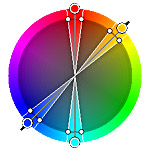 Tetradic color harmony (also called double complementary) is the richest color scheme because it uses four colors arranged in two complementary color pairs. Although this is a challenging color theory to put into practice, choosing one color to dominate with subtle hues of other colors is a good technique for achieving striking harmony.
Tetradic color harmony (also called double complementary) is the richest color scheme because it uses four colors arranged in two complementary color pairs. Although this is a challenging color theory to put into practice, choosing one color to dominate with subtle hues of other colors is a good technique for achieving striking harmony.
Setting white diamonds as a halo or sidestones next to color diamonds enhances the color. You can also play with a black and white scheme, as in this white and black diamond ring. Here are a few other pieces with stunning color combinations that embody best practices in color theory.
Platinum diamond rings featuring channel-set rainbow colors.
 Multicolored stackable eternity rings set with yellow, olive, pink, and chocolate melee diamonds.
Multicolored stackable eternity rings set with yellow, olive, pink, and chocolate melee diamonds.Gold pendant featuring a Fancy blue asscher cut diamond surrounded by a double pink halo.
Positioning carefully selected colors side by side will stop people in their tracks, whether in fine diamond jewelry or a master painting hanging in the Rubenshuis.
Image Credits: Color Wheel Pro, Langerman Diamonds.
Sources: Wikepia, Jewelrywise, Gia, Tigercolor, Color Wheel Pro
